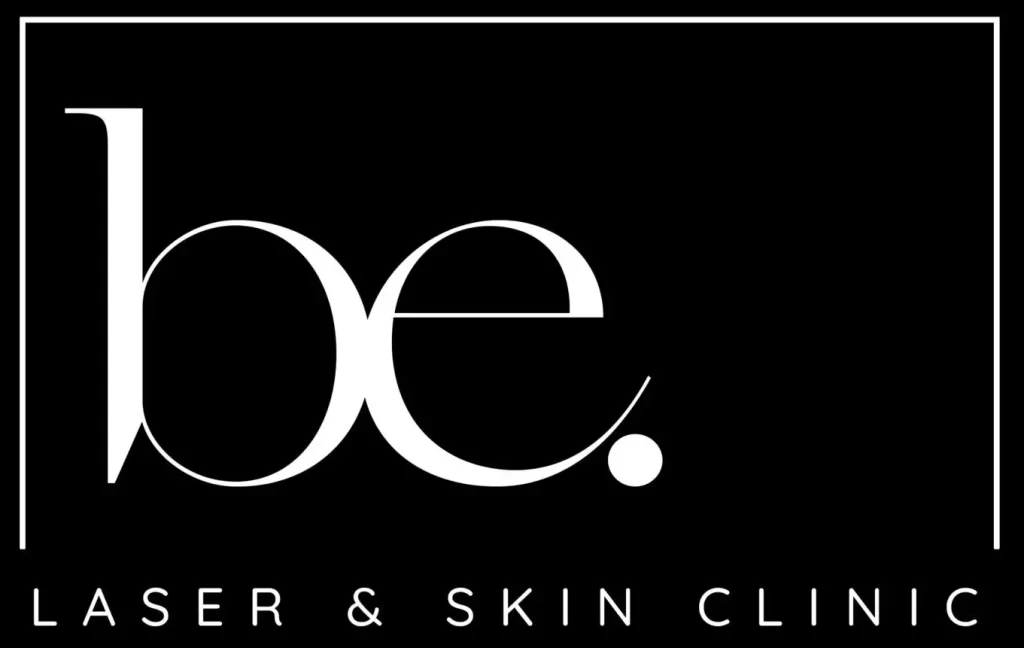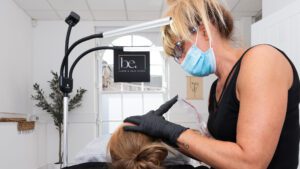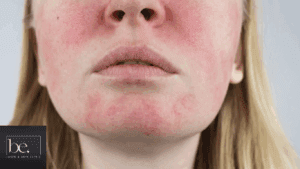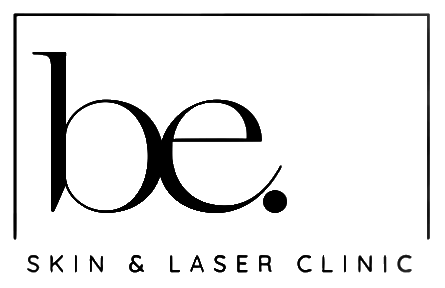Ever wondered if having great skin, even with rosacea, is actually possible or just a dream? Rosacea is a common, ongoing skin issue that shows up as redness and visible blood vessels, and it often makes life tricky for those who have it. But here’s some good news: laser treatments can really change things. This article talks about laser treatments that dermatologists approve, which are designed to help with rosacea, reduce redness, and make your skin look better for longer. With advice from experts and proven methods, you can find out how these new treatments can help you get healthier, more confident skin.
Key Takeaways
- Knowing about rosacea and what makes it worse helps a lot in dealing with it and picking the right treatments.
- Laser treatments, like Pulsed Dye Lasers and IPL, are great ways to deal with rosacea symptoms, making skin look better and less red.
- Working with a skin doctor and following their advice is super important for making sure laser treatments are safe and work well for you.
- Getting your skin ready before laser treatment and looking after it afterwards helps a lot with how well the treatment works and how you recover.
- For the best long-term results with rosacea, it’s good to mix laser therapy with other treatments and make some changes to your daily life.
.
Understanding Rosacea and Its Impact on Skin
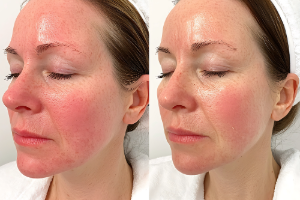
Rosacea, it’s more than just a bit of a blush, isn’t it? It’s a proper skin condition that can really affect your life. Let’s have a look at what it is and how it can impact you.
Defining Rosacea Symptoms
So, what does rosacea actually look like? Well, it’s not just about having rosy cheeks. It’s a chronic inflammatory condition, meaning it sticks around and causes redness, often with visible blood vessels, especially on your face. You might also get:
- Persistent flushing
- Small, red bumps that sometimes fill with pus
- Skin that’s sensitive and easily irritated
- In some cases, thickened skin, particularly around the nose (though that’s less common).
.
It can be tricky because it can flare up and then calm down, making it hard to predict.
Common Triggers and Aggravating Factors
What sets rosacea off? Loads of things, actually. Everyone’s different, but some common culprits include:
- Sun exposure – always a big one.
- Stress – because, you know, life.
- Hot drinks – that morning cuppa might be doing you no favours.
- Spicy foods – sadly, that vindaloo could be a trigger.
- Alcohol – especially red wine, apparently.
- Certain skincare products – some ingredients can really irritate things.
- Changes in temperature – going from a cold room to a warm one, for example.
.
Identifying your specific triggers is key to managing rosacea. Keeping a diary can really help you spot patterns and avoid those things that make your skin worse.
The Psychological Impact of Rosacea
It’s easy to focus on the physical symptoms, but rosacea can really knock your confidence. It’s hard when your face is constantly red or bumpy. People might make assumptions, and it can just make you feel self-conscious. This can lead to:
- Anxiety about your appearance
- Feeling embarrassed or ashamed
- Avoiding social situations
- Even depression in some cases
.
It’s important to remember that you’re not alone, and there are things you can do to manage both the physical and emotional sides of rosacea. Talking to a dermatologist or even a therapist can make a big difference.
Laser Solutions: Types and Their Benefits for Rosacea-Prone Skin
Laser therapy is a game-changer when it comes to tackling rosacea symptoms. We’re talking about light-based treatments specifically designed to target those pesky dilated blood vessels that cause redness. If you’re after some proper relief from this chronic condition, then anti-redness lasers are worth considering. Let’s have a look at some of the most popular and effective options out there.
Pulsed Dye Lasers for Redness Reduction
Pulsed Dye Lasers (PDL) are absolute pros at reducing redness. They work by targeting the blood vessels sitting just beneath the skin’s surface. The laser sends out a concentrated burst of light, which selectively heats and collapses these vessels. The result? A noticeable reduction in facial flushing and a more even skin tone. You’ll probably need a few sessions to see the best results, but each one should make a difference to your rosacea symptoms.
Intense Pulsed Light Therapy for Versatile Treatment
Intense Pulsed Light (IPL) therapy is known for being super versatile. It’s not just about redness; it can also help with skin texture issues that often come with rosacea. Unlike regular lasers, IPL uses a broad spectrum of light. This means it can tackle multiple skin concerns at once. Think of it as a multi-tasker for your skin, addressing redness, uneven texture, and even lesion dermatology all in one go.
Advanced Laser Systems for Comprehensive Care
Beyond PDL and IPL, there are some seriously advanced laser systems out there that offer a more comprehensive approach to treating rosacea. One example is the Harmony XL Pro. These systems often combine different laser technologies to target various aspects of rosacea, from redness and inflammation to broken capillaries and skin thickening. They can be tailored to your specific needs, offering a more personalised treatment experience.
Choosing the right laser treatment depends on your individual skin type, the severity of your rosacea, and what you’re hoping to achieve. It’s always best to chat with a dermatologist to figure out the best plan for you. They can assess your skin and recommend the most effective laser solution to help you manage your rosacea and get your skin looking its best.
Dermatologist-Approved Protocols and Safety Considerations
The Role of Professional Guidance
When it comes to laser treatments for rosacea, going it alone is a bad idea. Seriously. A dermatologist’s input is super important for making sure everything goes smoothly and safely. They’re the ones who can really assess your skin, figure out what’s causing your rosacea to flare up, and decide which laser treatment is going to work best for you. Plus, they’ll help you keep your expectations realistic, which is always a good thing.
Tailoring Treatment Plans to Individual Needs
Rosacea isn’t a one-size-fits-all kind of thing, so neither should your treatment. What works wonders for your mate might not do a thing for you. Dermatologists get this, and they’ll create a plan that’s just for you, taking into account things like:
- Your skin type
- How bad your rosacea is
- Your medical history
.
This way, you’re much more likely to see good results and avoid any nasty surprises.
Minimising Risks and Maximising Efficacy
Laser treatments are generally safe, but there are always a few risks to be aware of. Things like swelling or redness are pretty common, but a good dermatologist will know how to handle them. They might suggest some soothing creams or tell you to stay out of the sun for a bit.
Picking someone who knows their stuff is key. An experienced practitioner will not only minimise the chance of side effects but also make sure you get the best possible outcome from your treatment. They’ll have a plan in place to deal with anything that might pop up, so you can relax and focus on getting better skin.
Preparing for Laser Treatment: Pre-Treatment Steps
Getting ready for laser treatment is super important to make sure you get the best results and keep your skin happy. Think of it like prepping a canvas before painting – you want it to be in tip-top shape! Here’s what you need to do:
Ceasing Irritant Skincare Products
Right, first things first: ditch the harsh stuff! That means putting a pause on any skincare products that could irritate your skin – we’re talking retinoids, exfoliating acids, and anything else that might make your skin sensitive. Aim to stop using these at least a week before your treatment. You want your skin to be as calm as possible. It’s like telling your skin to chill out before the big day.
Avoiding Sun Exposure Before Treatment
Sun’s out, guns… covered up! Seriously, avoid sun exposure like the plague in the weeks leading up to your laser session. Sunburnt or even tanned skin can seriously mess with the treatment and increase the risk of side effects. Slather on the sunscreen daily – SPF 30 or higher – and wear a hat and sunglasses whenever you’re outside. Think of it as protecting your investment.
Optimising Skin Condition for Best Results
Okay, so you’ve stopped the irritants and avoided the sun. Now, let’s get your skin in the best possible condition. This means:
- Hydration is key: Drink plenty of water and use a gentle, rosacea-friendly moisturiser to keep your skin hydrated. Think of it as giving your skin a big drink of water.
- Skip the triggers: Try to avoid things that you know trigger your rosacea, like alcohol, caffeine, and spicy foods. It’s like avoiding your nemesis before a showdown.
- Chat to your dermatologist: Before you do anything, book a pre-treatment assessment with your dermatologist. They can assess your skin and tailor a treatment plan that’s perfect for you. This is super important for laser therapy success.
.
Following these steps can really boost the effectiveness of your laser treatment. It’s all about minimising risks and making sure your skin is ready to go. Proper preparation helps to ensure that the skin is in the best possible state to receive treatment, resulting in improved outcomes and a smoother recovery process.
The Laser Treatment Process: What to Expect
Ensuring Patient Comfort and Safety
Right, so you’ve decided to go for laser treatment. What’s it actually like? Well, first things first: safety is paramount. You’ll be given protective goggles to wear during the whole thing – think super cool sci-fi specs. The laser machines also have built-in cooling systems to stop your skin from getting too hot and bothered. It’s all about keeping you comfortable and preventing any burns.
Typical Session Duration and Frequency
Okay, so how long does a session take? It really depends on the area being treated and the type of laser being used. Generally, you’re looking at anywhere from 20 minutes to an hour. Don’t expect miracles after just one session, though. Most people need a series of treatments to see the full effect. We’re talking maybe three to five sessions, spaced a few weeks apart. You might also need maintenance treatments down the line, depending on how stubborn your rosacea is. Plus, you might need extra sessions to target other rosacea symptoms.
Achieving Long-Term Results and Maintenance
Getting the results you want isn’t just about the laser itself. It’s about what you do afterwards, too. Think of it like this:
- Cooling is Key: Ice packs are your new best friend. They help calm the skin and reduce any discomfort.
- Gentle Skincare: Ditch the harsh stuff and go for gentle cleansers and moisturisers. Your skin will thank you for it.
- Sun Protection: This is non-negotiable. Sunscreen, sunscreen, sunscreen! Protect that treated skin from those harmful rays.
.
It’s also worth remembering that rosacea is a chronic condition. Laser treatment can make a massive difference, but it’s not a one-time fix. You’ll need to keep up with your skincare routine and lifestyle adjustments to keep those symptoms at bay. Think of it as a long-term partnership with your skin.
Ultimately, achieving long-term results with laser treatment for rosacea involves a combination of professional procedures and consistent self-care. It’s about finding what works best for you and sticking with it. And remember, your dermatologist is there to support you every step of the way. They can help you tailor your treatment protocols to your specific needs and ensure you’re getting the best possible care.
Post-Treatment Care and Long-Term Management
Laser treatment is a great step towards managing rosacea, but what happens after the session is just as important. It’s all about keeping your skin happy and healthy in the long run. Let’s dive into what you need to know.
Immediate Post-Procedure Recovery
Right after your laser session, your skin might feel a bit sensitive. Think of it like a mild sunburn – it needs some TLC. You might notice some redness or slight swelling, but don’t worry, that’s totally normal and usually fades within a few hours to a couple of days.
- Cooling compresses can be your best friend during this time. They help soothe the skin and reduce any discomfort.
- Avoid anything that could irritate your skin, like harsh scrubs or heavily fragranced products.
- Skip the gym or any strenuous activity for a day or two, as sweating can make things worse.
.
Essential Skincare After Laser Treatment
Your skincare routine needs a bit of a revamp post-treatment. It’s all about being gentle and supportive to your skin’s healing process.
- Sunscreen is non-negotiable. Seriously, slather on a broad-spectrum SPF 30 or higher every single day, even if it’s cloudy. Sun exposure is a major trigger for rosacea flare-ups and can undo all the good work the laser did.
- Opt for mild, fragrance-free cleansers and moisturisers. Look for products specifically designed for sensitive skin.
- Keep your skin hydrated by drinking plenty of water and using a good moisturiser regularly.
.
Think of your skincare routine as a gentle hug for your skin. Avoid anything harsh or abrasive, and focus on soothing and protecting it.
Managing Potential Side Effects and Complications
While laser treatment is generally safe, there’s always a chance of some minor side effects. Besides the initial redness and swelling, you might experience some dryness or peeling. In rare cases, there could be some temporary changes in skin pigmentation.
Here’s a quick guide to managing these:
- Dryness: Use a rich, hydrating moisturiser several times a day.
- Peeling: Resist the urge to pick! Let the skin shed naturally. You can gently exfoliate with a very soft cloth if needed, but be super careful.
- Pigmentation changes: This is rare, but if you notice any unusual darkening or lightening of the skin, contact your dermatologist right away.
.
If you have any concerns or notice anything unusual, don’t hesitate to reach out to your dermatologist. They’re there to help you navigate the recovery process and ensure you get the best possible results from your laser treatment.
Integrating Laser Therapy with Holistic Rosacea Management
Laser treatments are great, but they’re not the only answer. Think of them as one piece of a bigger puzzle when it comes to managing rosacea. It’s about combining the power of lasers with other treatments and lifestyle changes for the best possible outcome.
Combining Lasers with Topical Treatments
Laser therapy can work wonders on redness and visible blood vessels, but it’s often even more effective when paired with topical treatments. Your dermatologist might suggest using prescription creams or gels alongside your laser sessions. These topicals can help manage inflammation, reduce breakouts, and maintain the improvements achieved with laser therapy. It’s all about finding the right combination that works for your skin.
Lifestyle Adjustments for Sustained Improvement
What you do outside the clinic is just as important as what happens inside. Rosacea is often triggered by things like sunlight, spicy foods, alcohol, and stress. Making some lifestyle tweaks can really help keep your symptoms under control.
Here are a few ideas:
- Always wear sunscreen, even on cloudy days.
- Identify and avoid your personal trigger foods.
- Manage stress through exercise, meditation, or other relaxation techniques.
.
It’s easy to forget that what you put inside your body and how you treat it day-to-day has a massive impact on your skin. Laser treatments can address the symptoms, but lifestyle changes can help prevent future flare-ups.
The Importance of Ongoing Dermatological Support
Rosacea is a long-term condition, so ongoing support from a dermatologist is key. They can monitor your progress, adjust your treatment plan as needed, and help you manage any flare-ups that occur. Regular check-ups and open communication with your dermatologist will ensure you’re getting the best possible care. They can also advise on advanced lesion removal if needed, as sometimes rosacea can lead to other skin concerns that require attention.
Dealing with rosacea can be tricky, but there are ways to make it better. Laser treatments, when used with other good habits, can really help calm your skin. Things like eating well, using gentle skincare, and managing stress all play a part. If you want to learn more about how we can help you get clearer, calmer skin, pop over to our website. We’ve got loads of info and ways to help you feel more confident.
Wrapping It Up: Your Journey to Calmer Skin
So, we’ve gone through quite a bit about rosacea and how those clever laser treatments can really help. It’s clear that understanding what makes your skin flare up is a big first step. Then, knowing about things like Pulsed Dye Lasers, IPL, and the Harmony XL Pro shows there are good options out there to get rid of that redness and make your skin look and feel better. The main thing is to work with a good skin doctor. They’ll make sure you get the right treatment and that it’s all done safely. And remember, looking after your skin before and after treatment is super important for the best results. It’s all about getting to a place where you feel good and confident about your skin. If you’re ready to explore these options, chatting with a skin specialist is definitely the way to go.
Explore redness-reducing treatments → Laser Skin Rejuvenation
Book a rosacea-friendly laser consult → Contact
Frequently Asked Questions
So, what exactly is rosacea?
Rosacea is a common skin issue that mainly makes your face red and can give you little bumps. It’s not catchy, but it can be a bit annoying and make you feel self-conscious. Things like sun, stress, hot drinks, spicy food, and booze can make it worse.
Can lasers actually help with rosacea?
Yep, laser treatments are a really good option for rosacea. They use special light to target the red bits and those tiny visible veins. It helps calm things down and makes your skin look a lot clearer. It’s a proper game-changer for many people!
What kind of laser treatments are there for rosacea?
There are a few types, but the main ones are Pulsed Dye Lasers (PDL) and Intense Pulsed Light (IPL). PDL is great for zapping redness, while IPL is a bit more all-rounder, helping with redness and making your skin feel smoother. Your dermatologist will pick the best one for you.
What should I do to get ready for a laser treatment?
Before your laser session, you’ll need to stop using any harsh skincare stuff, like strong creams or exfoliants, for about a week. And definitely stay out of the sun! You want your skin to be as calm and happy as possible for the best results.
What happens during the laser treatment itself?
During the treatment, you might feel a little snap or flick, like a tiny elastic band hitting your skin, but it’s usually not too bad. They’ll give you goggles to protect your eyes. You’ll probably need a few sessions, maybe three to five, to see the full effect, and then some top-ups now and then.
What’s the aftercare like for laser treatment?
Afterwards, your skin might be a bit red or swollen, but that usually goes down pretty quickly. The most important thing is to keep out of the sun and use a good SPF. Your dermatologist will also tell you about gentle skincare to keep your skin happy and healthy after the treatment.
